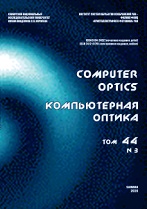|
Эта публикация цитируется в 1 научной статье (всего в 1 статье)
ОБРАБОТКА ИЗОБРАЖЕНИЙ, РАСПОЗНАВАНИЕ ОБРАЗОВ
Super-resolution microscopy based on wide spectrum denoising and compressed sensing
T. Cheng, H. Jin
Guangxi University of Science and Technology, 545006, Liuzhou, P. R. China, Chengzhong District, Avenue Donghuan 268
Аннотация:
WSD can effectively remove random noise of a raw image from very low density to ultra-high density fluorescent molecular distribution scenarios. The size of the raw image that WSD can denoise is subject to the used measurement matrix. A large raw image must be divided into blocks so that WSD denoises each block separately. Based on traditional single-molecule localization and super-resolution reconstruction scenarios, wide spectrum denoising (WSD) for blocks of different sizes was studied. The denoising ability is related to block sizes. The general trend is when the block gets larger, the denoising effect gets worse. When the block size is equal to 10, the denoising effect is the best. Using compressed sensing, only 20 raw images are needed for reconstruction. The temporal resolution is less than half a second. The spatial resolution is also greatly improved.
Ключевые слова:
fluorescence microscopy, super-resolution, noise, diffraction theory, compressed sensing
Поступила в редакцию: 06.06.2022
Принята в печать: 01.12.2022
Образец цитирования:
T. Cheng, H. Jin, “Super-resolution microscopy based on wide spectrum denoising and compressed sensing”, Компьютерная оптика, 47:3 (2023), 426–432
Образцы ссылок на эту страницу:
https://www.mathnet.ru/rus/co1142 https://www.mathnet.ru/rus/co/v47/i3/p426
|

| Статистика просмотров: |
| Страница аннотации: | 92 | | PDF полного текста: | 10 | | Список литературы: | 12 |
|




 Обратная связь:
Обратная связь: Пользовательское соглашение
Пользовательское соглашение
 Регистрация посетителей портала
Регистрация посетителей портала Логотипы
Логотипы








 Цитирование в формате
Цитирование в формате 
